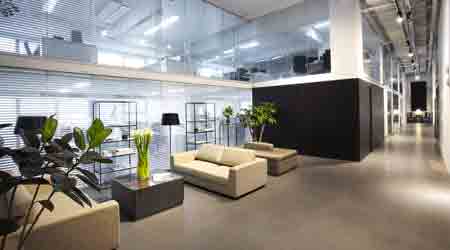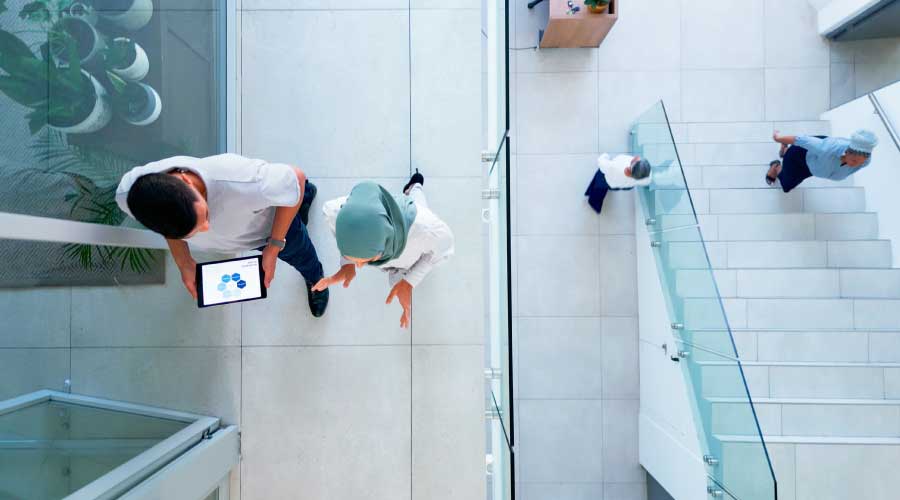Role of Furniture in Work Environment
Part 3 of a 4-part article on how to improve the physical work environment to increase employee satisfaction and productivity
Of course, the work environment is created by more than the mechanical systems in the space. Furniture, such as the development of sit/stand desks, also plays a significant role.
Although cubicles are no longer fashionable, they do allow workers to customize heating and cooling more effectively. In workplaces with individual temperature and airflow controls, Kampschroer says, fabric-covered cubicle panels can hold temperature differences of 4 to 6 degrees.
Partitions between workspaces can also provide speech privacy, but Larsen says the new popularity of standing desks is a complication: At standing height there is more chance for sound to spill out of the cubicle space.
And what about noise in those innovative open spaces with high, exposed ceilings? That is a tradeoff to be negotiated, often with the help of acoustical consultants. Alicia Larsen of Acentech says one solution is to set a uniform level of background noise. Sound masking systems are tuned to match speech frequencies. “It sounds like the HVAC system, but it’s constant,” she says.
Another solution gaining acceptance, Hedge says, is for employees who want to tune out others to listen to their own music through headphones.
Speech privacy, meaning that overhearing takes a conscious effort, is the standard for open offices, Larsen says. But since that will never suffice for confidential conversations, huddle rooms are part of modern office design. Some departments or fields — law, finance, medicine, and academia come to mind — will need more privacy and hence more offices or conference rooms. “You need a mix of open and closed, formal and informal, loud and quiet,” says Adam Stoltz, regional leader of consulting for HOK New York. Of course, those areas should be far apart from each other, and the loud area should be near public space such as the kitchen.
Even there, Larsen says, the trend for lots of glass presents challenges for acousticians; a door will need gaskets if the conversations inside are not to be overheard.
The WELL Standard
A new building standard that actively considers all these factors is the WELL standard, which looks beyond environmental factors to include things like food, fitness, comfort, and mental health. Hedge says the first results from certified buildings suggest the standard is producing happier workers — which cannot be taken for granted in a LEED building. WELL, he says, measures “how well the building is working in reality, because what is designed usually isn’t exactly what gets built.”
“People in general are pretty good at compensating for their situation in terms of productivity, but why make it hard for them?” says Larsen.
David Lewellen is a freelance writer who covers facility issues.
Related Topics:















